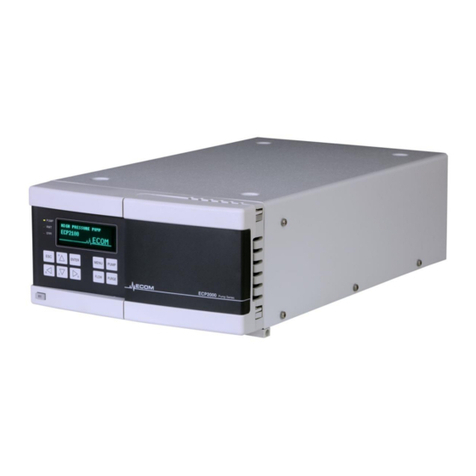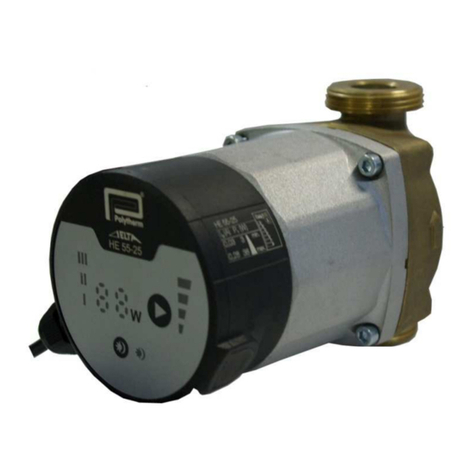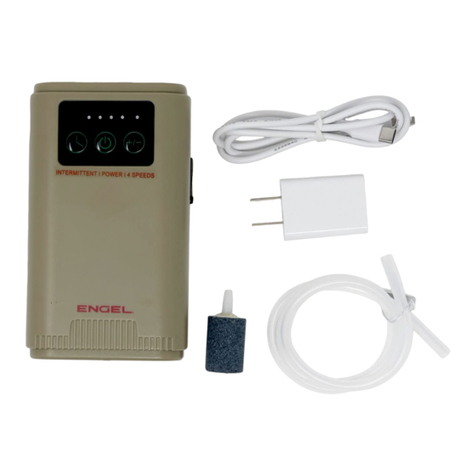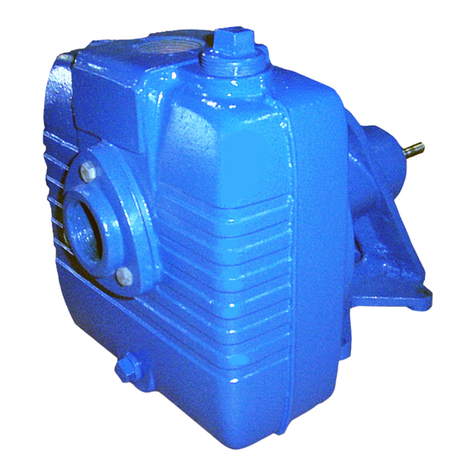Ecom ECP2010 User manual

ECP2010 /ECP2010H
ECOM spol. s r.o., Trebonicka 239, 252 19 Chrastany u Prahy, Czech Republic
IČO: 411 92 192, DIČ: CZ411 92 192
User’s Guide
ECP2010/ECP2010H
ANALYTICAL HPLC PUMP

ECP2010 /ECP2010H
2 / 68
Vlastnosti dokumentu
File:
Manual-ECP2010_ECP2010H-en-07.doc
Number of pages:
68
File size:
7065 kB
Last save:
11/15/2021 1:46:00 PM Dominika Pavlová
Ver.
Date
Author
Approved by
Description
00
17.12.2013
Jakub Hodaň
Jaroslav Formánek
First issue.
01
07.06.2018
Kateřina Kněžourková
Jaroslav Formánek
Second issue.
02
27.08.2018
Kateřina Kněžourková
Jaroslav Formánek
New item in chapter 6.6, removal of item in
chapter 6.5,refining information.
03
27.06.2019
Kateřina Kněžourková
Jaroslav Formánek
Up date of chapters 1.2, 1.3, 4.3, 4.4, 12.
03
05.11.2019
Dominika Pavlová
Jaroslav Formánek
Address changein the footage of the first
page, then in the chapter 13 and 15.
04
08.04.2020
Dominika Pavlová
Jaroslav Formánek
Declaration of Conformity update in chapter
15.
05
11.12.2020
Kateřina Kněžourková
Jakub Hodaň
Change of port value in chapter 6.4.1.
06
04.08.2021
Kateřina Kněžourková
Jakub Hodaň
Update of chapter 6.4.3.
07
15.11.2021
Dominika Pavlová
Jakub Hodaň
A flash disk with a user manual has been
added to the chapter 1.3.
Related documents
Manual-Ethernet_devices

ECP2010 /ECP2010H
3 / 68
CONTENT:
1. GENERAL INFORMATION.................................................................................................... 7
1.1. Product Function................................................................................................................................7
1.2. Produced Versions.............................................................................................................................7
1.3. Accessories ........................................................................................................................................7
2. GENERAL OPERATING INSTRUCTIONS ................................................................................ 9
2.1. Safety Symbols on the Unit...............................................................................................................9
3. DESCRIPTION ................................................................................................................. 10
4. INSTALLATION AND BASIC CONTROL FROM KEYBOARD ..................................................... 12
4.1. Inlet Tubing Connection ..................................................................................................................12
4.2. Outlet Capillary Connection ............................................................................................................12
4.3. Injector Holder and Column Holder Mounting...............................................................................13
4.4. Injection Valve Mounting .................................................................................................................13
4.5. Piston Backwash ..............................................................................................................................14
4.5.1. Simple Manual Use ....................................................................................................................15
4.5.2. Automatic Backwash ..................................................................................................................15
4.6. Assemblage of Waste System ........................................................................................................16
4.7. Connections on Unit Rear Panel.....................................................................................................19
4.8. Start of Unit .......................................................................................................................................20
4.9. Basic Control by Keyboard .............................................................................................................20
4.10. Pump Initiation................................................................................................................................20
4.11. Description of Symbols on the Screen ........................................................................................21
4.12. Door Installation .............................................................................................................................22
5. CONTROL FROM PC........................................................................................................ 23
6. WORKING WITH MENU .................................................................................................... 23
6.1. Parameters ........................................................................................................................................23
6.1.1. Flow Rate ...................................................................................................................................24
6.1.2. Pressure Limits...........................................................................................................................24
6.1.2.1. High Pressure Limit ........................................................................................................................... 24
6.1.2.2. Low Pressure Limit............................................................................................................................ 24
6.1.3. Concentration .............................................................................................................................24
6.1.4. Solvents Volume ........................................................................................................................24
6.2. Preferences .......................................................................................................................................24
6.2.1. General.......................................................................................................................................25
6.2.1.1. Pressure Units................................................................................................................................... 25
6.2.1.2. Display Brightness............................................................................................................................. 25
6.2.1.3. Sound................................................................................................................................................ 25
6.2.2. Purge ..........................................................................................................................................25

ECP2010 /ECP2010H
4 / 68
6.2.2.1. Purge Flow ........................................................................................................................................ 25
6.2.2.2. Pressure Limit ................................................................................................................................... 25
6.2.2.3. Purge Time........................................................................................................................................ 25
6.2.3. Gradient......................................................................................................................................26
6.2.3.1. Gradient Cycles................................................................................................................................. 26
6.2.3.2. Valves Used ...................................................................................................................................... 26
6.2.3.3. Auto Valves Closing .......................................................................................................................... 26
6.2.4. Compensation ............................................................................................................................26
6.2.4.1. Compensation Selection.................................................................................................................... 26
6.2.4.2. Pressure Pulsation Limit.................................................................................................................... 27
6.2.5. Solvents......................................................................................................................................27
6.2.5.1. Solvents Limit .................................................................................................................................... 27
6.2.5.2. Solvents Limit Use............................................................................................................................. 27
6.2.6. Log Level ....................................................................................................................................27
6.2.7. Leakage......................................................................................................................................28
6.3. Control...............................................................................................................................................28
6.3.1. Start Compensation Learning.....................................................................................................28
6.3.2. Gradient Program.......................................................................................................................29
Steps from Program Creating to Leaving Program Mode............................................................................... 30
Accelerated Option of Program Initialization by Pressing PUMP .................................................................... 33
Status after Unit Turning Off and On.............................................................................................................. 33
6.3.3. Init/Stop/Reinit Program .............................................................................................................33
6.3.4. Program Setup ...........................................................................................................................34
6.3.4.1. Load Program.................................................................................................................................... 34
6.3.4.2. View Program.................................................................................................................................... 34
View Time Table............................................................................................................................................. 34
View Parameters............................................................................................................................................ 35
6.3.4.3. Edit Program ..................................................................................................................................... 35
First Gradient Program Creating .................................................................................................................... 35
Modifications of Existing Gradient Programs.................................................................................................. 38
Viewing Running Program.............................................................................................................................. 38
Modifications of Running Program ................................................................................................................. 38
Graphic Presentation of Modifications in Running Step. ................................................................................ 40
6.3.4.4. Exit Program Mode............................................................................................................................ 40
6.3.5. Open/Close Gradient Valves......................................................................................................41
6.4. IO Config............................................................................................................................................41
6.4.1. Ethernet ......................................................................................................................................41
6.4.1.1. DHCP/STATIC IP .............................................................................................................................. 42
6.4.1.2. IP Address......................................................................................................................................... 42
6.4.1.3. Subnet Mask ..................................................................................................................................... 42
6.4.1.4. Default Gateway................................................................................................................................ 42
6.4.2. Remote Keylock .........................................................................................................................42
6.4.3. Interface......................................................................................................................................42
6.4.3.1. Analog Input ...................................................................................................................................... 44
6.4.3.2. Digital Input 1 .................................................................................................................................... 44
6.4.3.3. Digital Input 2 .................................................................................................................................... 44

ECP2010 /ECP2010H
5 / 68
6.4.3.4. Digital Output Switch ......................................................................................................................... 44
6.5. Info .....................................................................................................................................................45
6.5.1. Device.........................................................................................................................................45
6.5.2. Boards ........................................................................................................................................45
6.5.2.1. Main Board........................................................................................................................................ 45
6.5.2.2. Display Board.................................................................................................................................... 45
6.5.2.3. XPORT Module ................................................................................................................................. 45
6.5.3. Ethernet ......................................................................................................................................45
6.5.4. User Text ....................................................................................................................................45
6.5.5. Pump ..........................................................................................................................................45
6.5.6. Parts ...........................................................................................................................................45
6.5.6.1. Seals ................................................................................................................................................. 46
6.5.6.2. Check Valves .................................................................................................................................... 46
6.5.6.3. Pistons............................................................................................................................................... 46
6.6. Diagnostics .......................................................................................................................................46
6.6.1. Errors..........................................................................................................................................46
6.6.2. Warnings ....................................................................................................................................46
6.6.3. Power .........................................................................................................................................47
6.6.4. Cooling .......................................................................................................................................47
6.6.5. Interface......................................................................................................................................47
6.6.6. Leakage State ............................................................................................................................47
6.6.7. Pump ..........................................................................................................................................48
6.6.8. Solvents......................................................................................................................................48
6.6.9. Pulsation.....................................................................................................................................48
6.6.10. Gradient State ..........................................................................................................................48
6.7. Service...............................................................................................................................................49
6.7.1. Parts Replacement.....................................................................................................................49
6.7.1.1. Seals ................................................................................................................................................. 50
6.7.1.2. Check Valves .................................................................................................................................... 52
6.7.1.3. Pistons............................................................................................................................................... 53
6.7.1.4. Needle of Degassing/Purging Valve.................................................................................................. 53
6.7.1.5. O-ring in Degassing/Purging Valve ................................................................................................... 54
6.7.2. Calibrations.................................................................................................................................54
6.7.2.1. Pressure Sensor................................................................................................................................ 54
6.7.2.2. Flow................................................................................................................................................... 54
Selection of Volumetric Flask Volume............................................................................................................ 55
Checking Flowrate.......................................................................................................................................... 57
6.7.2.3. Gradient............................................................................................................................................. 57
6.7.3. Factory Settings .........................................................................................................................57
6.7.3.1. Partial Reset...................................................................................................................................... 57
6.7.3.2. Complete Reset................................................................................................................................. 57
6.7.3.3. Restore Factory Settings................................................................................................................... 57
6.7.3.4. Other ................................................................................................................................................. 57
6.7.4. Special........................................................................................................................................57

ECP2010 /ECP2010H
6 / 68
7. WORKING MODES .......................................................................................................... 58
8. RS232.......................................................................................................................... 58
9. REPLACEMENT OF LINE FUSE.......................................................................................... 58
10. TROUBLESHOOTING...................................................................................................... 59
10.1. Diagnostics from PC Record.........................................................................................................61
Correct Pressure ............................................................................................................................................ 61
Released Bubble............................................................................................................................................ 62
Damaged Check Valves................................................................................................................................. 62
Damaged Seals.............................................................................................................................................. 63
11. MAINTENANCE ............................................................................................................. 63
11.1. Periods.............................................................................................................................................63
11.2. Cleaning and Decontamination.....................................................................................................64
11.3. Cleaning Check Valves ..................................................................................................................64
11.4. Storage and Transport ...................................................................................................................64
12. SPARE PARTS.............................................................................................................. 64
13. WARRANTY AND POST-WARRANTY REPAIRS.................................................................. 66
14. TECHNICAL PARAMETERS ............................................................................................. 67
15. APPENDIX 1–DECLARATION OF CONFORMITY ............................................................... 68

ECP2010 /ECP2010H
7 / 68
1. GENERAL INFORMATION
This unit is designed for use in laboratories in systems of liquid chromatography as analytical
HPLC pump.
1.1. Product Function
The pump is double-acting with main and auxiliary pumping blocks. Main pumping head is
equipped with inlet and outlet check valve. Smooth flow of mobile phase is ensured by suitable
shape of driving cams, achieving steady run of sapphire/ceramic pistons pumping in back pressure
and also by precise control of motor rotation. The pump works independently as isocratic.
Together with box, supplied separately, works also as gradient pump as well as an isocratic
pump. If the box is disconnected, the unit informs about its disconnection when entering menu
items designated for gradient mode (e.g. Menu/Parameters/Concentration).
1.2. Produced Versions
ECP2010 Analytical HPLC pump 40Mpa Cat.: ACA0000X
ECP2010H Analytical HPLC pump 60MPa Cat.: ACF0000X
Compatible boxes:
- With gradient valves
ECB2004B Gradient box with degasser with Bürkert valve Cat.: ABA0000X
ECB2004B Gradient box with degasser with Bürkert valve and PC Cat.: ABAPC00X
ECB2007 Gradient box without degasser Cat.: ABD0000X
ECB2007PC Gradient box without degasser Cat.: ABDPC00X
- Without gradient valves
ECB2006 Box for mobile phase bottles Cat.: ABC0000X
ECB2008 Analytical box with degasser Cat.: ABE0000X
1.3. Accessories
BASIC ACCESSORIES SUPPLIED WITH THE UNIT
P/N
Qty.
Picture
Description
EKAB-011
1
Mains cable 10A-250V 2 m
23984000
1
Tube fuse T - 2.5A/250V, CSA
(main unit fuse; for combined power socket with main switch and main
fuse)
23987000
1
Tube fuse T - 6.3A/250V, CSA
(internal fuse for professional service; mustn’t be used as main fuse !!!)
EKAB-040
1
LAN cable 1m
(for ETHERNET connector)

ECP2010 /ECP2010H
8 / 68
P/N
Qty.
Picture
Description
00051478
1
Terminal block 8 pins green
(for IO INTERFACE connector)
18329000
1
Screwdriver Torx TX06
(for replacement of seals in washing head)
18331000
1
Screwdriver Torx TX20
(for mounting injector holder, mounting heads during seals replacement)
E1132890
1
Open End Wrench 1/4-5/16"
(for metal through bolts on capillaries, for mounting valve holders)
ACA99400
1
Capillary injector-column 0.25 mm with fittings
(OD=1/16“ ; l=300mm ; volume =15µL ; thread 10-32 UNF)
ACA99300
1
Outlet capillary to injector 0.25 mm with fittings
(OD=1/16“ ; l=300mm ; volume =15µL ; thread 10-32 UNF)
ABA16000
1
Tubing 1/8" 900 mm with filter 2 um and lid
(ID=1/16“ ; volume=1781µL only tubing ; thread ¼“-28 UNF ; lid for
mobile phase reservoir LCT 02 with plug for tubing ; metal filter ; guide
for connection attached)
ACA99500
1
Waste tubing bypass
(from by-pass valve to waste system)
YY005000
1
Syringe LUER 10 ml, plastic
ACA99012
1
Injector holder Series 2000
(combined holder for injecting valves of Rheodyne and Vici type)
ACA99700
1
Back washing set for ECP2010
ACA99000
1
Waste set ECP2010
ACA99020
1
Tool for 1/8" removal
(for replacing seals in heads)
00016000
1
Door 2000
(To be installed after complete installation of the unit! Never manipulate
with the unit, if the door is mounted!)
DOC00004
1
Flash disk with User Manual
DOC00002
1
-
Production protocol
Spare parts and selectable accessories see 12. Spare Parts.

ECP2010 /ECP2010H
9 / 68
2. GENERAL OPERATING INSTRUCTIONS
Caution: If the unit is used in a manner not specified by the manufacturer, the
protection provided by the unit may be impaired!
Caution: The unit may not be used, if it is leaking.
Caution: Do not place unit or any other equipment so that disconnecting power cord
is difficult.
Caution: Never manipulate with the unit, if the door is mounted. There is a danger of
its damage.
Caution: Never dismount unit cover. There is nothing needing customer service or
maintenance.
Caution: The pump is filled with isopropanol after construction or service.
Caution: When using buffers or other crystalizing agents in mobile phases, manual
backwash of pistons must be proceeded.
Caution: The pump and box must be calibrated together, see Production protocol.
2.1. Safety Symbols on the Unit
Caution, electrical device! Disconnect power cord before servicing.
Electrical device! Disconnect power cord before servicing. Read the
operation guide before replacing fuse!

ECP2010 /ECP2010H
10 / 68
3. DESCRIPTION
FRONT VIEW
No.
Description
1
Front switch.
2
Keyboard.
3a
Connection for input tubing (pump inlet) –working block with pumping and washing
head (behind the pumping head).
3b
Connection for output capillary (pump outlet).
4
Washing/degassing (bypass) valve –compensating block with pumping and washing
head.
5
Leakage sensor.
6
Drain channel with cone for connecting waste system.
7
Door hinges.
8
Slots for tubing and capillaries.
9
Display.
10
Status LED:
PUMP (green) for indication of pump motor status (PUMP and PURGE).
RMT (yellow) for indication of unit remote control status. If it is on, the unit
communicates through ETHERNET or RS232 interface.
ERR (red) for indication of unit error status. If it is on, there is an error indicated, if it
blinks, there is a fatal error indicated and unit status has changed.

ECP2010 /ECP2010H
11 / 68
KEYBOARD BUTTONS AND THEIR FUNCTION
Symbol
Description
MENU
Entering unit menu, fast menu leaving.
PUMP
Pump start/stop and other functions when working with gradient program
(viz. 6.3.2).
FLOW
Direct setting of pump flowrate.
PURGE
Entering purge mode.
ENTER
Confirms selected MENU item, confirms newly set parameter value,
evokes QUICK DIAGNOSTICS screen.
ESC
Returns one step back without saving changes.
“B“, “ D“, “
A“, “ C“
Direction keys.
Using arrows up/down increases/decreases value of set parameter.
A, B, C, D –direct choice of mobile phase valve.
D –starts gradient program.
REAR VIEW
No.
Description
1
Combined power socket with main switch and main fuse.
2
Connector for adding box.
3
Connector for external start.
4
Connector IO Interface.
5
Connector Ethernet/LAN.
6
Connector USB.
7
Connector RS232.

ECP2010 /ECP2010H
12 / 68
4. INSTALLATION AND BASIC CONTROL FROM KEYBOARD
Place the unit in a suitable location that satisfies the following conditions:
•Horizontal place.
•Keep at least 10 cm space behind the rear of the unit.
•Keep away from equipment generating strong magnetic field.
•Equipment is intended for use in regular laboratory environment only - see Technical
parameters –operating environment conditions.
4.1. Inlet Tubing Connection
For connecting pump in isocratic mode, use inlet tubing with filter (ABA16000) from supplied
accessories. For gradient mode connection is supplied inlet tubing (ABA19000), which is among
accessories of the box.
At first unscrew the white cap on pump inlet.
Caution: The pump is filled with isopropanol after construction or service.
Isocratic connection of pump
inlet
Connect inlet tubing with filter.
Snap the tubing to the socket for
tubing and capillaries.
Set of inlet tubing with a lid and
filter (picture on the right).
Gradient connection of pump
inlet
Connect inlet tubing. Connect the
other end to the box.
Tubing with moving compensation
is fixed into the upper socket for
tubing and capillaries.
Note: The upper and side sockets in the unit front panel are determined for gripping
tubing and capillaries. FEP tubing with outer diameter 1/8“ are fixed by snapping
into the slot. Capillaries and tubing with outer diameter 1/16“ are fixed using a
short FEP tubing with outer diameter 1/8“ and inner diameter 1/16“, threaded on
the capillary. Such a threaded tubing cannot be snapped in the slot, it should be
pushed in from the side.
4.2. Outlet Capillary Connection
To connect the pump to injector, use outlet capillary (ACA99300). For connecting pump to column,
use outlet capillary (ACA99400).

ECP2010 /ECP2010H
13 / 68
Connect outlet capillary. Tighten
capillary nut with side wrench 1/4 ".
Connect the other end of capillary
to injector valve.
4.3. Injector Holder and Column Holder Mounting
Use Torx screwdriver TX20 to
unscrew two screws in front part of
the right panel of the unit.
Use the unscrewed screws to
mount the injector holder,
according to the picture.
4.4. Injection Valve Mounting
Injection valve is not a part of pump accessories, neither a part of the entire system
accessories and shall be ordered separately.
The injection valve holder is constructed for mounting two different types of valves and with
hole for outlet capillary from pump to injection valve –Rheodyne and Vici type. The difference is in
spacing of holes for mounting the valve, see picture below.
Rozteč 25.4 mm je určena pro dávkovací ventil
typu Rheodyne.
Rozteč 27.5 mm je určena pro dávkovací ventil
typu Vici.
Rozteč 12,5 mm je určena pro výstupní kapiláru
z čerpadla do dávkovacího ventilu.
Všechny uváděné průměry jsou v jednotkách mm.
Injection valve Rheodyne is
mounted to the holder with two
screws using allen/imbus key.
Usually it is among the injection
valve accessories.

ECP2010 /ECP2010H
14 / 68
Handle of injection valve is
mounted with two imbus worms,
using imbus key 2 mm.
The cable is connected to
connector START on unit rear
panel.
Injection valve Vici is mounted to
the holder with two screws
M4 x 6 mm instead of original
M4 x 10 mm, using imbus key
3 mm. Screws and imbus key are
among the injection valve
accessories if it is ordered in
Ecom spol. s r.o.
Handle of injection valve is
mounted by snapping into the
valve body.
Put the cable through the window
and connect to connector START
or IO Interface connector on unit
rear panel. Make configuration
(see. 6.4.3).
4.5. Piston Backwash
Caution: If you are using puffers or other crystallizing agents in mobile phases, you
must use piston backwashing.
Each pumping block (left and right) has two heads –pumping and washing. Pumping heads
are farther from the unit. Washing heads have in upper and lower part slot with LUER cone, for
connection of piston backwash. Both heads are equipped with a seal (piston padding) and during
work with buffer solutions may buffer crystals adhering to the piston may damage the seal and
pump can start leaking.

ECP2010 /ECP2010H
15 / 68
SET FOR PISTON BACKWASH
1. Inlet part; 1a. Luer cone for connecting to washing head; 1b. Flowrate regulator; 1c. Lid GL45 with plug;
1d. Luer cone for connecting syringe; 2. Connection of washing heads; 3. Outlet into waste system;
4. Syringe 50ml
4.5.1. Simple Manual Use
Connect both Washing heads in series using tubing and LUER adapters. Fill syringe with
HPLC water (or mobile phase dissolving buffers) and wash the heads (flowrate regulator must be
opened). Washing heads are now filled with liquid, rinsing the pistons from rear side. Now, once in
a while during work with the pump, push some liquid through the pump washing system (approx.
1x per hour 5 ml).
4.5.2. Automatic Backwash
Connect both Washing heads in series using tubing and LUER adapters. Insert tubing with
flow regulator into reservoir with HPLC water (or mobile phase dissolving buffers). Loosen the flow
regulator and suck liquid into the system using plastic syringe (picture on left). Close the flow
regulator, disconnect syringe and place the tubing end into waste reservoir. Loosen the flow
regulator and now the liquid is flowing through the system by gravity (picture on right). Set the flow
regulator so that at the end of the tubing escapes approx. 5-7 drops per minute.

ECP2010 /ECP2010H
16 / 68
4.6. Assemblage of Waste System
The pump is equipped with waste channel, leading the liquid off the pumping block. In its
proximity is leakage sensor. The function of the sensor is closely described in chapter 6.2.7, in
chapter 6.4.3.4 is described the setting of IO INTERFACE Digital Out Switch –LEAKAGE
signalizing the leakage of pump to another unit. In chapter 6.6.5 is displayed the status of IO
INTERFACE and in chapter 6.6.6 is shown the leakage sensor status.
WASTE SET ECP2010
1. Silicone tubing 2 m with connector Y and I; 2. Connector Y with two pieces of silicone tubing;
3. Connectors L into the drain channel.
The pump is usually a part of a system, together with other units. Connection of waste
system can be adjusted according to given system.
One possible system is pump with box. Among box accessories is T connector, one end
should be pushed into the box drain channel (see picture below). Second end should be connected
with longer tubing of part 2 (see picture above) and third end may be used i.e. for waste tubing
from injection valve.

ECP2010 /ECP2010H
17 / 68
Shorter tubing of part 2 (picture above) should
be connected between the pump and the backstop
on holder of injection valve. This tubing serves as
waste tubing from washing head, put through window
in valve holder. The opening of part 2 should be
connected with connector L, forming a 90° angel with
desktop, and is connected with one of two tubing,
connected to connector Y of part 1. This tubing
should be cut from 1 m silicon tubing part 1,
according to your needs. Second connector L is
pushed into the drain channel of pump, horizontally,
and is connected with second tubing of connector Y
of part 1. Third tubing of part 1 should be placed into
waste reservoir. Connector Y of part 1 is placed
under level of the working surface.
Caution: Replace the connector Y of part 1 at least 10 cm below the desktop.

ECP2010 /ECP2010H
18 / 68
Another possible setting is complete system HPLC (box, pump, column oven, detector).
Each unit from the HPLC system has among its accessories all necessary parts for interconnection
of entire waste system. On picture below is shown complete waste system and detailed picture of
the pump.
All parts of waste system are parallel with unit
lateral sides, neatly connected without twisting, so that
the waste liquid may fluently run down to waste
reservoir. In the tubing junctions with connectors may
accumulate liquid, that after a while flows through
connector openings.
Interconnetion of waste system between box and
pump is similar as described above. Difference is in
using shorter tubing of part 2, placed behind injection
valve holder, and the longer tubing remains in front of
the holder. Connector Y of part 2 should be connected
with a part of column oven accessories (connector Y
connected with connector L and tubing). Press
connector L into waste channel of the pump. Connect
tubing with a part of detector accessories (two
connectors Y joint with connector L, tubing and
connector I). Connector L connected with connector Y
should be pushed into waste channel of column oven.
Connector Y with a tubing carries out the mobile phase
from detector and connector I joint with tubing carrying
liquid into waste reservoir (see above). Its part is a
tubing joining connector L, pushed into waste channel of
detector.
Note: New setting is leaking at the beginning. It stops after some time.

ECP2010 /ECP2010H
19 / 68
4.7. Connections on Unit Rear Panel
Plug the power supply cord into the instrument socket on unit rear
panel. The cord is among unit accessories.
Plug the interconnecting cable between pump and box into
connector ECB2000. Cable is among box accessories.
Connector can be fixed by two screws using cross tip screwdriver.
Plug injection valve cable into START connector. Plug it all the
way in until it snaps in.
In order to unplug the connector, press the safety pin (see arrow
on right picture) and pull out.
Insert terminal block into connector INTERFACE, it is among the
pump accessories. If there is no signal connected to the terminal
block, it is not necessary to connect it.
Plug LAN network cable into connector ETHERNET, it is among
the pump accessories. Press the connector in until the safety pin
snaps in. In order to unplug the connector, press the safety pin
(see arrow on the right picture) and pull out.
The other end of network cable shall be plugged into PC or
computer network element.
Connector USB serves for plugging USB cable for interconnection
with PC.
Cable is not among the unit accessories.

ECP2010 /ECP2010H
20 / 68
Plug serial line cable into connector RS232 for interconnection with
PC.
Cable is not among the unit accessories.
4.8. Start of Unit
Use a switch on the rear panel of the unit for connecting to mains voltage, then switch on the
unit using push button on the front panel. The push button glows red, if power source is off and
green, if power source is on. If power supply is disconnected, the unit remembers last status of this
push button and after power supply reconnection it restores the last status. This can be used for
automatic start in the system with a common switch of power source for whole system of liquid
chromatograph (for example using a multiple socket-outlet with a switch).
4.9. Basic Control by Keyboard
After unit start (Mode START) initial screen
displays unit type ECP2010 / ECP2010H.
Then the unit turns to mode IDD, pump motor is in
idle status.
Main screen –isokratic pump mode.
Main screen –gradient pump mode.
Gradient mode is detected automatically by cable
interconnection with a box after unit start.
4.10. Pump Initiation
The unit is filled with isopropanol, it is necessary to rinse it out and fill the system with
mobile phase and degass the entire system.
Loosen purge/degassing valve by turning it by
90°.
Slip a plastic syringe on purge/degassing valve,
the syringe (10 ml) is a part of pump accessories.
In gradient mode is necessary to check, whether appropriate valve (A, B, C or D) with mobile
phase is opened. By pressing key PURGE and then pressing key PUMP is started pump washing.
This manual suits for next models
1
Table of contents
Other Ecom Water Pump manuals
Popular Water Pump manuals by other brands

Agilent Technologies
Agilent Technologies MS40+ user manual
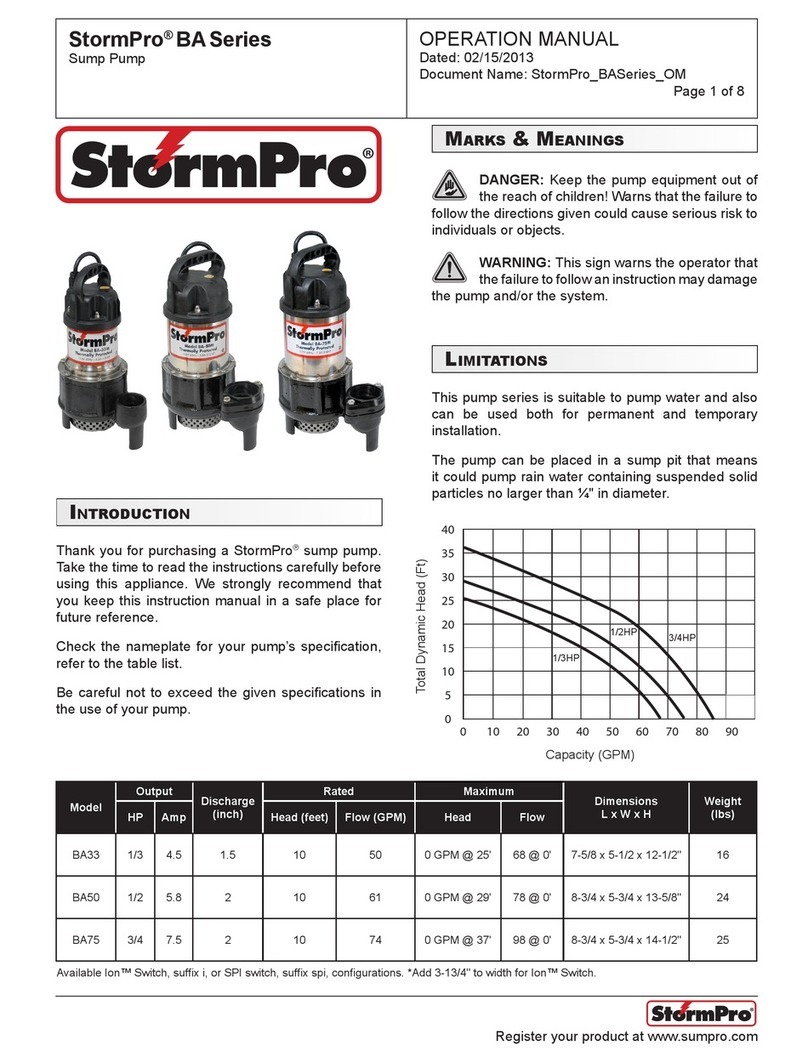
StormPro
StormPro BA Series Operation manual
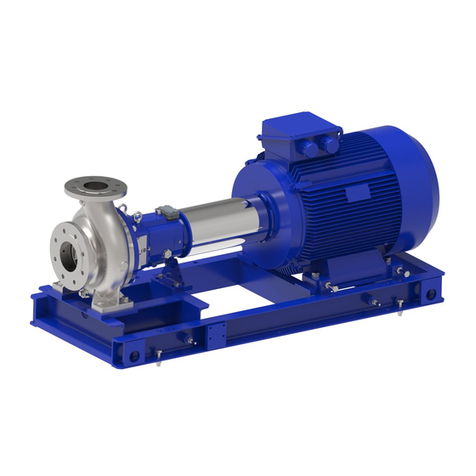
Xylem
Xylem e-IXP Additional Installation, Operation and Maintenance Instructions

Yale
Yale MPB040-E manual
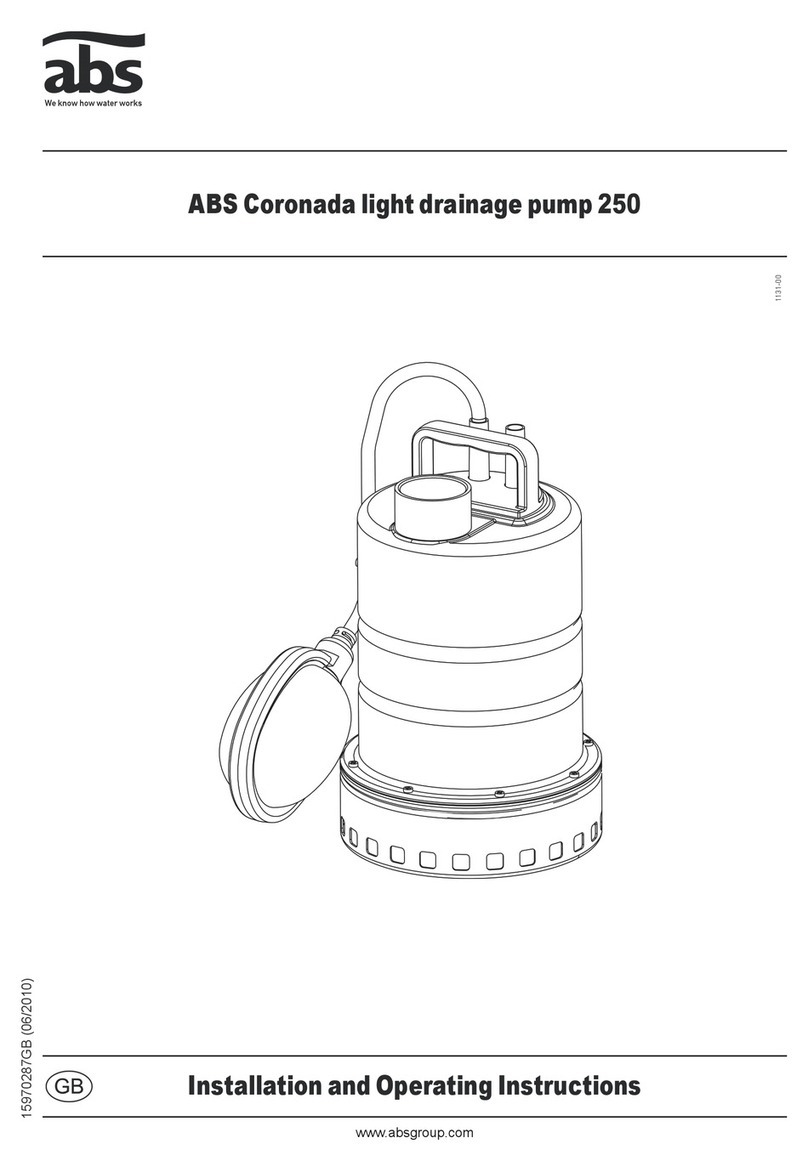
ABS
ABS Coronada 250 Installation and operation instruction

PondMAX
PondMAX EV700 instruction manual
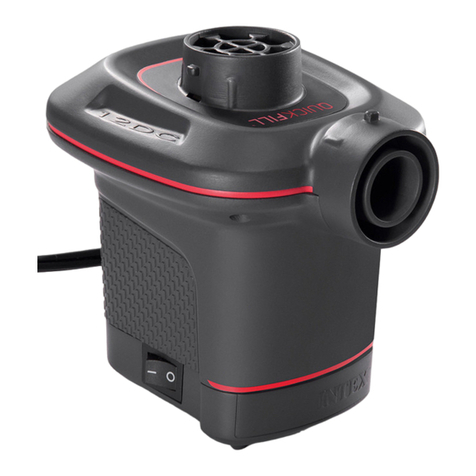
Intex
Intex Quick-Fill AP636 owner's manual
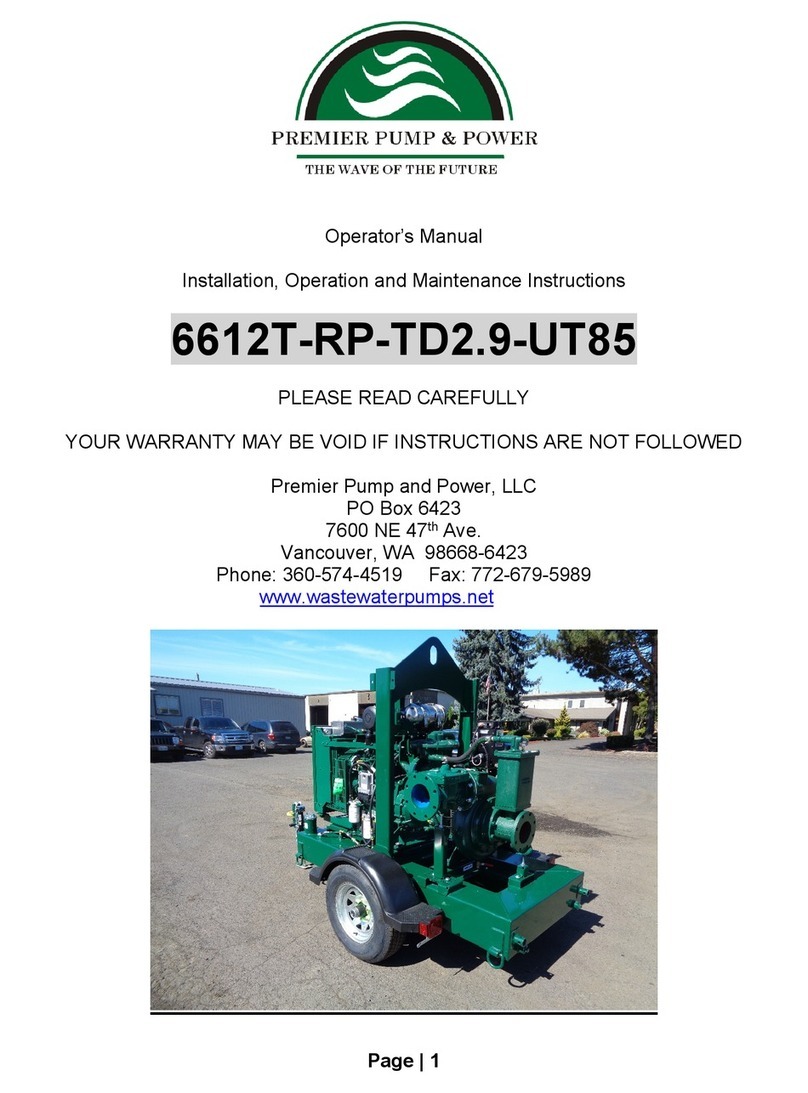
Premier pump & power
Premier pump & power 6612T-RP-TD2.9-UT85 Operator's manual

Giant
Giant GP7545GB operating instructions

Fountain TECH
Fountain TECH FT-130 user guide
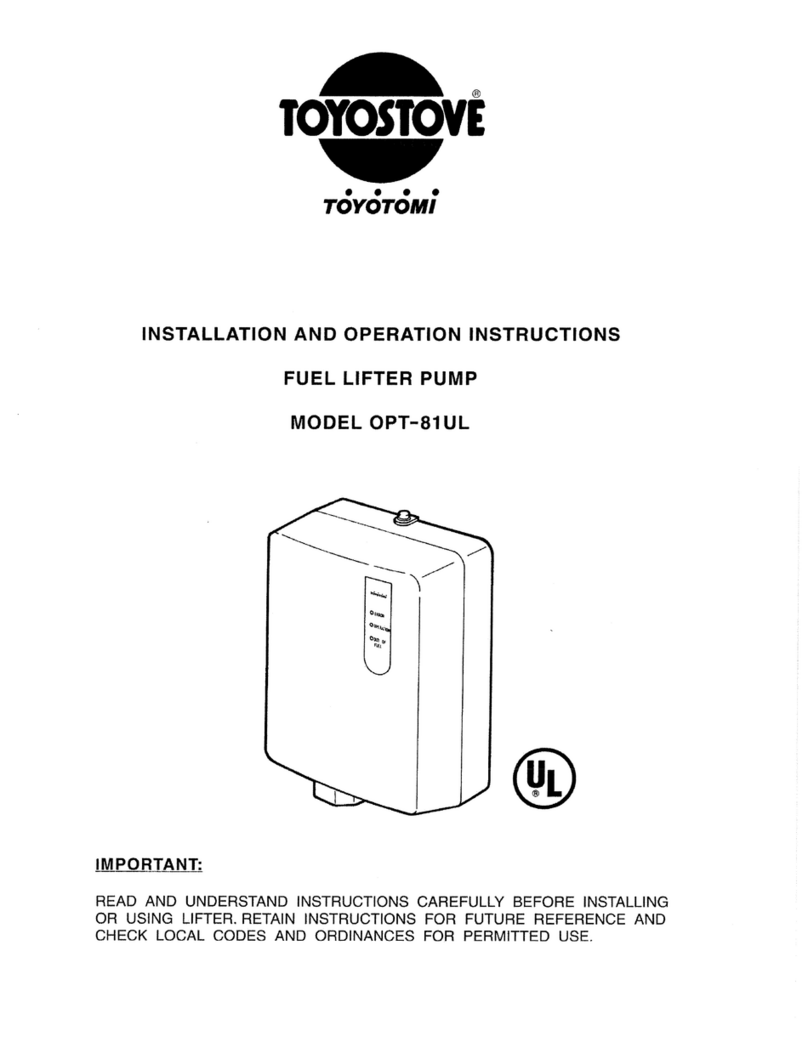
Toyostove
Toyostove OPT-81UL Installation and operation instructions
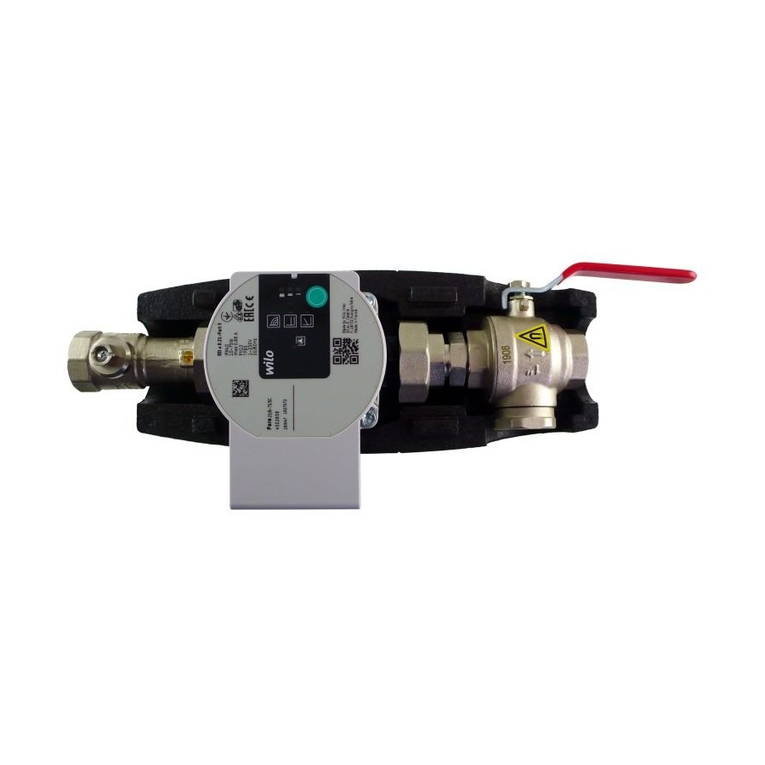
Regulus
Regulus CSE OTS MFB+ZV W Installation and operation manual
